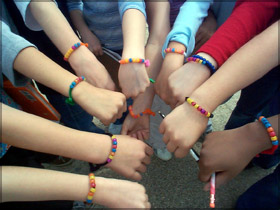
Figure 1: Students wearing solar beads on Sun-Earth Day.
"Sun-Earth Day is comprised of a series of programs and events that occur throughout the year culminating with a celebration on or near the Spring Equinox. Each year we wrap a fresh new thematic approach around Sun-Earth science while highlighting Sun-Earth Connection scientists, their missions, and research."
Many people around the world will celebrate Sun-Earth Day 2012 on or near the spring equinox in March. However, since 2012 is very special year filled with a variety of celestial events, we selected a theme that will help you explore the nature of eclipses and transits throughout our solar system. Welcome to, "Shadows of the Sun!" This website will continue to be populated with the latest information about our upcoming programs, background resources, sample activities, and registration information!
So prepare to join thousands of people in learning more about the Transit of Venus on June 5-6, 2012, and a total solar eclipse on November 13-14, 2012.
Over the past eleven years, the Sun-Earth Day Team has coordinated education and public outreach events that highlight NASA Sun-Earth Connection research and discoveries. The team's strategy involves using celestial events, such as total solar eclipses and the Transit of Venus, as well as Sun-Earth Day during the March equinox, to engage K-12 schools and the public in space science activities, demonstrations, and interactions with space scientists.
In partnership with NASA EDGE, the Sun-Earth Day team will produce video and webcast programming that will be shared with formal and informal education audiences worldwide. The award winning NASA EDGE team is known for their offbeat, funny and informative look behind the NASA curtain. Their guests include scientists, educators and students who will! If you've ever wanted to learn about NASA but thought you needed to be a rocket scientist, wait no longer!
In collaboration with partners that include science centers and museums around the world, Sun-Earth Connection missions, NASA Edge, NSTA and others, we produce webcasts, other multi-media, and print resources for use by school and informal educators nation-wide and internationally. We provide training and professional development to K-12 educators, museum personnel, amateur astronomers, Girl Scout leaders, etc., so they can implement their own outreach programs taking advantage of our resources. A coordinated approach promotes multiple programs occurring each year under a common theme.
Register to receive a monthly update from us about Sun-Earth Day events.
During intense solar flares, astronauts see bright flashing streaks of light as a result of high-energy particles zipping through their eyeballs.